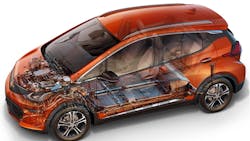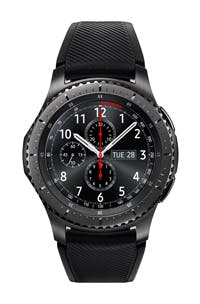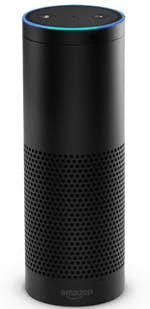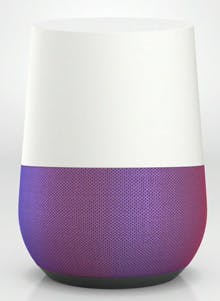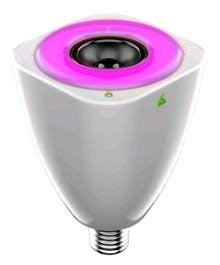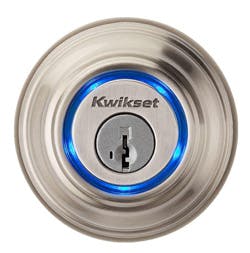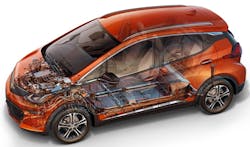This file type includes high resolution graphics and schematics when applicable.
The Internet of Things (IoT) covers a lot of ground, and much of it is in the consumer space. There has been a flood of products and the numbers continue to rise. Many have a limited market, but the number has risen into the billions: Gartner estimates 6.4 billion in 2016.
Though IoT devices vary greatly, most have a number of common attributes. These include wired or wireless connectivity, movement of data to the cloud, and an application to configure and monitor the IoT device. The app typically runs on an Android or Apple platform, with Windows and macOS running second. At this point, many consumer IoT devices only interact with the app and the cloud. Still, more are starting to integrate with other devices, often using frameworks like those associated with Google Nest and Apple HomeKit.
Communication: IoT’s Tower of Babel
Interaction with other devices can be complicated by the plethora of communication mechanisms, as well as by an overcrowded wireless space. Ethernet dominates wired connectivity, although other wired connections exist, such as power-line networking. Bluetooth and Wi-Fi are most common, but even these have compatibility issues. Bluetooth 4.0 supports Bluetooth Low Energy (BLE), also known as Bluetooth Smart, and classic Bluetooth.
Other low-rate wireless personal area networks (LR-WPAN) include 802.15.4, ZigBee, and Z-Wave. There are proprietary wireless protocols, but these aren’t the only alternatives for developers and consumers. Wireless standards like LoRa and ULE, that uses the cordless phone DECT protocol, are in play as well.
Near-field communication (NFC) is often used for synchronization or authentication. It has a short range, and is often utilized for financial transactions (though it isn’t limited to that application).
Most devices use a single interface, but some may provide support for two. Typically, gateways will be the only devices that have more than a couple interfaces. Many consumer IoT devices are designed for mobile use, so minimizing power requirements often means limiting wireless support.
Wearable and Medical IoT
Wearable consumer IoT devices like smartwatches, pulse oximeters, and heart-rate monitors (HRMs) are readily available. Hundreds of smartwatches are now on the market, along with even more fitness bands, including the Samsung Gear 3 (Fig. 1). The Gear 3 hosts a dual-core, 1-GHz Exynos processor with 768 MB of RAM and 4 GB of flash memory that runs the Linux-based Tizen operating system.
The watch supports Bluetooth 4.2, 802.11b/g/n, and Magnetic Secure Transmission (MST), as well as NFC. Sensors include a 3D accelerometer, 3D gyro, barometer, HRM, and ambient light. The system has GPS, too. There’s even an LTE version that can make calls using the built-in speaker and microphone.
Unlike the Gear 3, Hexiwear is designed to come apart. It can also be inserted in a wristband and has an expansion port. The Micro USB socket is for charging and development.
But watch wear isn’t the only wearable technology being developed; smart clothes and shoes are also becoming available. For example, ReTiSense’s Stridalyzer (Fig. 3) is an intelligent insole. It tracks foot pressure using a pair of sensors, allowing the system to calculate stress and movement—not just the number of steps typical of a fitness tracker. It uses Bluetooth LE to communicate with a smartphone or the Stridalyzer Pod. The Pod can double for the app in a smartphone and record information, which is useful in the event that you don’t want to run around with a smartphone.
Sleep tracking is often supported by smartwatches and fitness bands, but they need to be worn overnight to be effective. An alternative is a smart bed or, in the case of the Luna Indiegogo project, a mattress cover. The cover includes a range of sensors to track information like the bed temperature and ambient humidity. It also has a light sensor and microphones.
The mattress cover is designed to track people’s breathing and heart rate, and is linked to the cloud via Wi-Fi. It even functions as a collaborative IoT device that works with Nest-compatible products. This would let the system adjust the house temperature once you’re comfortably asleep. The cover is machine-washable and can be tumble-dried.
Home Automation
Home automation is ripe for IoT, but it hasn’t been cheap. Most of these devices still come at a premium price, but they are more common. Command-and-control systems like Amazon’s Echo (Fig. 4a), with its Alexa-enabled voice-control system, competes with platforms like Google Home (Fig. 4b). These systems provide voice control of other IoT devices like smart lighting, security systems, smart thermostats, and smart HDTVs that are part of the smart home. Wireless connectivity is big change compared to the wired smart homes of the past.
These control systems can double as wireless speakers, but they’re also always listening to users. They do not have cameras, yet. Of course, smart cameras are already available for security applications. Still, it’s possible to order items to be delivered using Alexa.
Smart lighting has seen everything from multicolored mood lighting to a wireless, DLP projector in a light-bulb form factor. Speaker-based light bulbs include Sengled’s Bluetooth speaker bulb and AwoX’s StriimLIGHT WiFi smart bulb (Fig. 5). Smartphones can stream audio to the bulbs that can be used in almost any receptacle that’s already occupied by a lightbulb.
Smart locks like Kwikset’s Kevo (Fig. 6) can be controlled using a key fob, a real key, a smartphone with Bluetooth 4, or via the internet. Other systems employ communication alternatives like NFC. These devices can provide selective control such as one time access, as well as tracking status and usage.
Tracking status and usage of all sorts of things are part of the IoT mix. For example, plant-tracking devices measure ground water and ambient humidity. And systems like Fishbit monitor pH, salinity, and temperature in an aquarium.
Cats, dogs, and other pets can now have wearable GPS tracking systems, but so can children and adults. For dementia patients, they can be very helpful to caregivers by warning them if a patient leaves a known area.
Automotive IoT
The car is another space where IoT is cropping up. Smart cars have the ability to link devices into their telematics system. The minimum these days is Bluetooth connectivity for tying a smartphone into the audio system, allowing hands-free calling. More advanced systems provide two-way linkages between applications. Streaming audio is a common application.
Some cars now have options to act as a mobile Wi-Fi hotspot. For example, most new GM cars (like the Chevy Bolt) have an option to support OnStar 4G LTE, providing Wi-Fi hotspot capabilities to passengers (Fig. 7). This capability is just the start of more advanced communication and cooperation with other devices. For example, the Bolt can be recharged at home or at charging stations where communication with the vehicle can provide additional services.
There will likely be a never-ending flow of new consumer IoT devices. New application areas are opening up as more sensors are brought into the mix. Smart-metering systems for electricity, oil, and gas cross over from industrial IoT to the consumer space, potentially providing users with more information about their consumption.
There remain a host of issues to resolve, ranging from security and personal privacy to ever-more-crowded communication environments. This will be a challenge given the exploding number of devices.
This file type includes high resolution graphics and schematics when applicable.
About the Author
William G. Wong
Senior Content Director - Electronic Design and Microwaves & RF
I am Editor of Electronic Design focusing on embedded, software, and systems. As Senior Content Director, I also manage Microwaves & RF and I work with a great team of editors to provide engineers, programmers, developers and technical managers with interesting and useful articles and videos on a regular basis. Check out our free newsletters to see the latest content.
You can send press releases for new products for possible coverage on the website. I am also interested in receiving contributed articles for publishing on our website. Use our template and send to me along with a signed release form.
Check out my blog, AltEmbedded on Electronic Design, as well as his latest articles on this site that are listed below.
You can visit my social media via these links:
- AltEmbedded on Electronic Design
- Bill Wong on Facebook
- @AltEmbedded on Twitter
- Bill Wong on LinkedIn
I earned a Bachelor of Electrical Engineering at the Georgia Institute of Technology and a Masters in Computer Science from Rutgers University. I still do a bit of programming using everything from C and C++ to Rust and Ada/SPARK. I do a bit of PHP programming for Drupal websites. I have posted a few Drupal modules.
I still get a hand on software and electronic hardware. Some of this can be found on our Kit Close-Up video series. You can also see me on many of our TechXchange Talk videos. I am interested in a range of projects from robotics to artificial intelligence.
